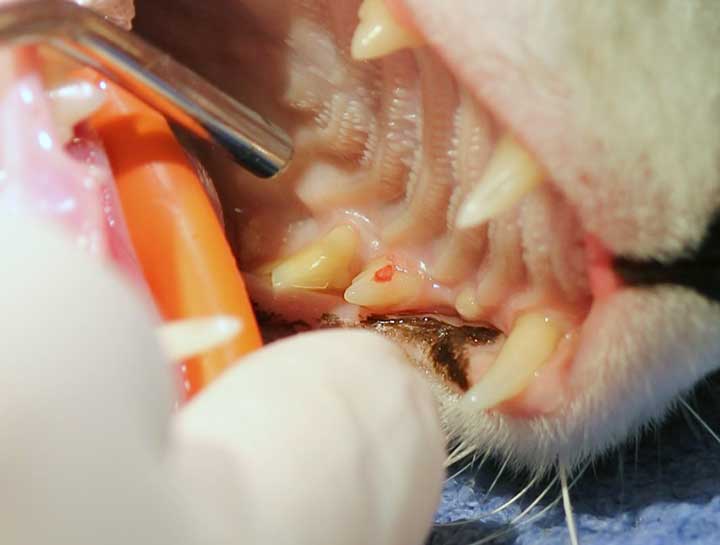Feline Odontoclastic Resorptive Lesion
Painful lesions affecting up to 60% of cats.
Feline odontoclastic resortive lesion (FORL) is a very common disease affecting more than 70% of cats 5 years of age or older. These lesions can affect any tooth and certain breeds such as Himalayans and Persians are genetically predisposed to developing them. The lesions result in external resorption of the root, just like a cavity. The process begins with gingiva (gum) inflammation and odontoclastic cells move into the gingiva and resorb the enamel.
Once the resorptive disease process begins, the tooth dentin can also be ” eaten away” inside the tooth from the pulp side. The cavitation will continue to move into the dentin resulting in significant pain. As the tooth becomes resorbed externally and internally, the crown of the tooth will break off leaving the exposed pulp canal. This process of pulp exposure results in infection, inflammation and pain.
The treatment of choice is extraction of all affected teeth. X-rays of all the teeth is also recommended to look for root resorption that may not be present visually. Lesions that are superficial can be treated with a filling, but studies show the resorptive disease will continue and extraction will be the only “cure”. Affected teeth can be treated by crown amputation or extraction with all roots removed depending upon the stage of the disease process.
Pain in cats is difficult to notice and may be manifested by loss of appetite and weight loss, salivation, dropping food or preference to moist foods, and pain on touching the mouth or teeth. Some cats can become reclusive and unaffectionate. Once diagnosed with FORL disease, cats should have at least semi-annual or annual examinations for dental evaluation.
Call us at (530) 272-6651 today to schedule your pet's next dental exam.

